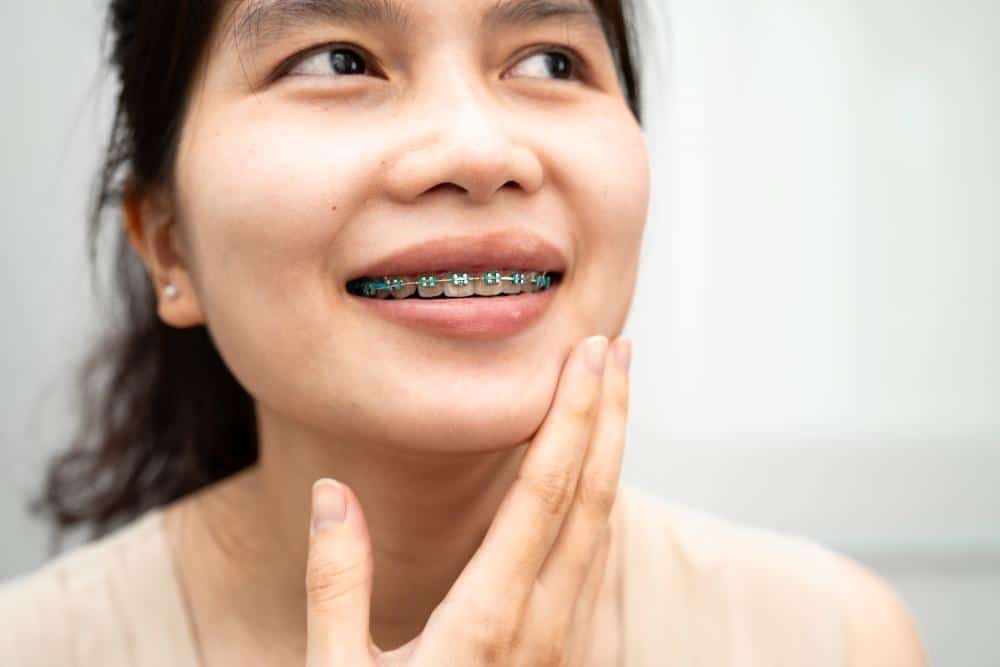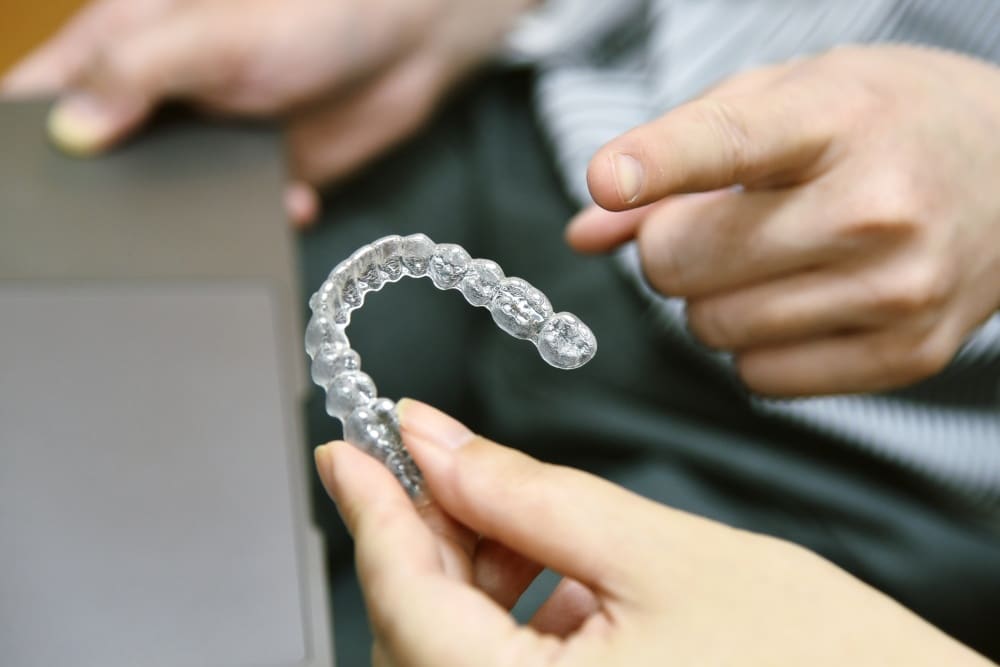
Is it Normal to Have Numerous Cavities After Braces?
Braces are a game-changer for anyone looking to correct crowded teeth or an uneven bite. But while they help shape your smile, they may also make oral hygiene harder to maintain. This is because the brackets, wires, and bands create small spaces where food can easily get trapped, especially around the gum line and in between teeth. This can make steps like brushing and flossing more difficult, even for those who are usually diligent about their dental routines.
If you’ve noticed visible signs of tooth decay after having your braces, you’re not alone.
Many patients share the same concern: why do cavities seem to show up after all that orthodontic work? Could the braces have made it worse—or is something else going on?
Defining Dental Cavities
But first, what exactly is a cavity?
Cavities, also known as tooth decay, form when certain areas of the tooth surface are damaged and begin to break down. Over time, these spots can turn into small holes if left untreated. They form when plaque—a sticky layer of bacteria—builds up on your teeth and feeds on leftover food particles, especially sugar. This process releases acid, which gradually wears down the enamel, the protective outer layer of your teeth. Once that outer layer is breached, decay can spread more easily into deeper layers of the tooth.
The decay can also set in, especially around hard-to-clean areas like between teeth or around brackets and wires if you have braces. That’s why regular dental check-ups and good oral hygiene habits aren’t just routine—they’re critical in spotting decay early and preventing more serious problems down the road.
Understanding How Braces Impact Oral Health
Braces are a proven way to correct misaligned teeth and bite issues—goals that many patients see as worth the effort. But while they’re doing their job, as mentioned, they can also make basic oral care harder to manage. With brackets and wires covering parts of the teeth, it’s easier for food particles to get stuck and harder to clean those areas thoroughly.
These hard-to-reach spots become a breeding ground for plaque if not cleaned properly. Over time, the accumulation of plaque increases the chances of developing cavities. On top of that, some people may switch to softer or more processed foods during treatment, which can further contribute to the issue.
This doesn’t mean braces directly cause cavities, but they do raise the chances if oral hygiene slips.
The Connection Between Braces and Cavity Development
So, does wearing braces mean you’re bound to end up with cavities? Not necessarily.
Contrary to popular belief, braces don’t cause cavities on their own, but they can make it easier for cavities to develop if oral hygiene isn’t well maintained. As mentioned, when food particles and plaque get stuck around the brackets and wires, it becomes much easier for tooth decay to develop if brushing and flossing aren’t done thoroughly.
This added difficulty can lead to more plaque staying on the teeth, especially around brackets and wires.
That’s where the risk begins. But it’s not a guaranteed outcome.
Many people complete their orthodontic treatment without developing any cavities—what makes the difference is consistency in brushing, flossing, and seeing the dentist regularly.
Do Clear Aligners Also Increase Cavity Risk?
Clear aligners may seem like the cleaner alternative to braces, but they still come with their own set of challenges. Because they fit tightly over your teeth, any leftover food or bacteria can still get trapped between your teeth and the plastic surface, especially if you don’t brush properly before putting them back in. This can eventually lead to plaque buildup and cavities.
The upside? Clear aligners are removable, which makes it easier to brush and floss your teeth thoroughly. But that only helps if you stay consistent.
Strategies for Preventing Cavities While Wearing Braces

Keeping your teeth healthy during orthodontic treatment takes a bit more effort, but it’s worth it. With the right habits in place, you can prevent cavities from forming while your smile is being straightened.
Consider the following:
- Brush Regularly: Food easily gets lodged around brackets and wires. Brushing at least twice a day—and ideally after every meal—helps remove leftover debris before it turns into plaque. A soft-bristled toothbrush can reach around the metalwork without irritating your gums.
- Floss Daily: Threading floss through braces can be tricky, but skipping it isn’t an option. Use a floss threader or a water flosser to reach between teeth and clean beneath the wires more effectively.
- Use Fluoride Products: Fluoride helps protect and strengthen tooth enamel. Choose a fluoride toothpaste and consider adding a fluoride mouthwash to your routine for added protection against decay.
- Regular Dental Check-ups: Don’t skip your dental visits. Routine check-ups help catch early signs of decay and allow your dentist to give your teeth a deeper clean around those hard-to-reach spots.
Maintaining Oral Health After Braces Removal
Getting your braces off can feel like a major milestone, but that doesn’t mean your oral care routine ends there. Just because your teeth look straight doesn’t mean they’re immune to decay. Even without brackets and wires in the way, plaque and food debris can still build up if you’re not consistent.
Brushing twice daily, flossing thoroughly, and scheduling regular dental check-ups remain essential to prevent new cavities from forming. Maintaining these habits helps protect the progress you’ve made and keeps your smile healthy long after treatment ends.
The Role of Retainers in Post-Braces Oral Health
Retainers are a key part of preserving your results after braces, but they also come with their own care requirements. While retainers don’t directly cause cavities, wearing them without regular cleaning can trap bacteria and lead to plaque buildup.
Like clear aligners, since they rest snugly against your teeth for extended hours, it’s easy for germs and food particles to accumulate. That’s why it’s important to clean your retainers daily, just like your teeth. Whether you’re using removable or fixed types, keeping them clean helps protect your oral health and prevents issues from developing down the line.
Achieving a Straighter, Healthier Smile
If you’ve been wondering why you keep getting cavities during orthodontic treatment, the answer often lies in how challenging it can be to keep your teeth clean with braces on.
While braces don’t directly cause tooth decay, the added difficulty in brushing and flossing can lead to more plaque buildup, and that’s where the problem begins. Similarly, if you’re dealing with repeated issues like needing new fillings or asking yourself whether braces might be affecting them, you’re not alone. These are common concerns for many undergoing orthodontic care.
The good news? With consistent oral hygiene, proper retainer maintenance, and regular check-ups at an affordable dental clinic in Singapore, you can keep cavities in check while straightening your teeth. Whether you’re already wearing braces or just starting to explore braces options in Singapore, make oral care a priority at every stage.
Looking for a clinic that can support your needs during and after orthodontic treatment? Find affordable and experienced dental professionals at Family Dental Care who understand the full picture, so your smile stays both straight and strong.



